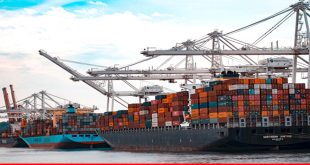Deficit is gradually decreasing while better performance is increasing income of the organization
After years of poor performance, Pakistan Railways (PR) is now moving on fast track development with much to satisfaction of its customers. Railways has finally reduced its deficit to Rs27.25 billion for fiscal year 2014-15 and earned Rs31.92 billion against the target of Rs28 billion. The cash-strapped Railways has managed to strengthen its fiscal position. “It has earned about Rs3.95 billion more than the target and managed to cut deficit by Rs5.32 billion by controlling expenses,” sources in Pakistan Railways told PAGE.
According to the sources, the reasons behind improvement in the balance sheet were better service delivery and higher number of passengers and freight trains. The number of passengers has improved significantly as over 10 million people traveled through the Railways network in the past couple of years.
In the past two years, the number of freight trains has gone up from 182 to 2,920 annually, an increase of 1,504 percent while the locomotive strength for freight operation has reached 80 compared to eight in 2013, the sources said.
For the current fiscal year 2015-16, Pakistan Railways has setting a revenue target of Rs38 billion, despite the government’s advice, suggesting Rs32 billion. To achieve the target, Railways is planning to step up initiatives in different areas.
New initiatives
Under the tenure of sitting Minister for Railways Khawaja Saad Rafique, the following initiatives were taken for the fast expansion of the rail line services:
– Pakistan Railways under a new land lease policy was offering mid-term lease instead of 99 years of lease. “In two years, Railways has earned over Rs3 billion whereas in the previous five years (2008-13), the railways earned only Rs2.4 billion from land lease.
– The successful Green Line train venture has encouraged the management to initiate more such ventures. In addition to this, the Railways management is planning to outsource loss-making train routes to minimize the burden.
– Despite having unpleasant experience of the public-private partnership, Railways is set to go for the same ventures.
– Pakistan Railways is also going to start new train services on the model of Green Line for the economy-class passengers.
– Main Line-1 project has been extended up to Landikotal from where it will be linked to Jalalabad (Afghanistan). In addition to this, work on linking Quetta-Gwadar-Jacobabad via railway line will be started from next year.
Pakistan Railways is one of the departments, which have been damaged by corruption, and mismanagement in the past regime. During the period from 2008 to 2013, we saw trains without locomotives, coaches without electricity, trains without fuel to run, daily protests of employees, death of a pensioner due to nonpayment, and several other bad incidents such as these.
Quick changes
When sitting Railways Minister Khawaja Saad Rafique assumed charge, Pakistan Railways had only 95 locomotives, out of which only 55 were running, while 28 power vans were available for the support of air-conditioned coaches. Now, Pakistan Railways has over 200 locomotives, out of which 50 locomotives are being used for freight trains. Now, the Railway authorities are signing contracts with different companies for the transportation of their goods, while it gets momentum in the transportation of coal to various power projects.
Workers are now happy to work under new environment because the heavy machineries of Railways are now working properly. Service of trains and staff are also improving after long time.
Trains now almost reach their destinations on time and even if there is report of late timings, it is only by a difference of 2 to 3 hours, which previously had a state of delaying for more than 24 hours.
Another positive sign is that about 15 million passengers who had left traveling through railways have again regaining confidence in this railroad transport system.
According to Railways Minister Khawaja Saad Rafique, deficit of Railways is gradually decreasing while better performance is increasing income of the organization. He said funds have been allocated for upgradation of railway stations and staff quarters all around the country.
Saad Rafique said the share of Pakistan Railways in China-Pakistan Economic Corridor is $3.7 billion. He said Mainline-1 Railway Track between Karachi-Lahore-Peshawar carries the status of backbone in railway system for linking three provinces of the country, and funds under CPEC will be spent on it.
He said the Peshawar-Lahore railway track will be doubled on priority basis. He said Mainline-2 will establish a link between Peshawar, Zhob, and Quetta.
Saad further said there was a proposal for laying a new railway track from Havelian to Khunjerab (Pak-China border). The project would be taken as part of long-term plan of the China-Pakistan Economic Corridor (CPEC) 2025-30 which would usher in socio-economic development of the country. A pre-feasibility study had been carried out by two foreign consulting firms during 2007 and 2008 with an estimated cost of $10.500 billion. A PC-II had been submitted to Planning Commission for detailed feasibility study of the proposed link.
Further, contract agreement for procurement of 55 D.E locomotives (4000-4500HP) had been signed with M/S G.E USA, adding the delivery schedule was between December, 2016-17. With available stock of locomotives Pakistan Railways was running 10 freight trains per day ex-port Karachi. After June 2017 with addition of 55 D.E locomotives, Pakistan Railways would be able to run 12 more freight trains per day.
 PAGE Blog Business Weekly Magazine
PAGE Blog Business Weekly Magazine
